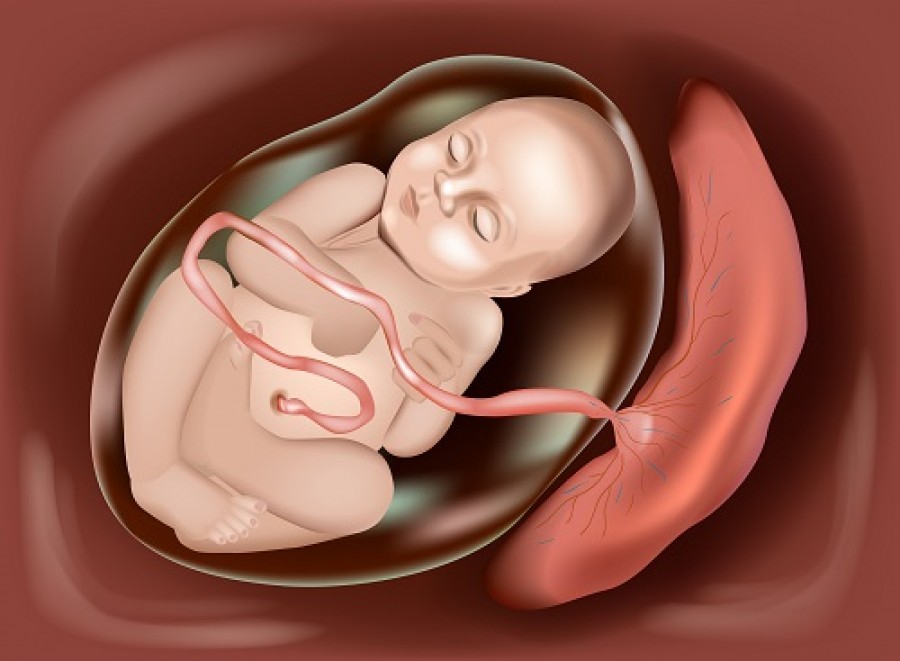Placenta Accreta: Facts You Need To Know

Placenta accreta is a condition that occurs during pregnancy where the placenta becomes embedded in the uterine wall, and is danger of causing haemorrhaging after your baby is delivered. This article covers the basic information around the condition including who is at risk and what it means for you and your baby.
What is Placenta Accreta and what do I need to know about it?
There is always something else for pregnant women to worry about – right? We don’t mean to stress you needlessly, but some things it is better to know about, so you can keep an eye out for symptoms. One of these things is placenta accreta.
What is Placenta Accreta?
Placenta accreta is a pregnancy condition that is actually quite serious, and is considered to be a high-risk pregnancy complication. This occurs when the placenta grows too deeply into the uterine wall.
It has the effect that after birth, part or all of the placenta remains attached, which can cause severe blood loss after the baby has been delivered.
It may also cause the placenta to invade the muscles of the uterus, which is called placenta increta, or may grow through the uterine wall, which is known as placenta percreta.
Why it is serious?
The possible complications of this condition can include:
Heavy vaginal bleeding
There is a high risk of haemorrhaging after delivery. This bleeding can also cause a life-threatening condition that prevents your blood from clotting normally, as well as possible kidney or lung failure.
A blood transfusion is sometimes necessary.
Premature birth
Suffering from placenta accreta can sometimes cause labour to start early. Additionally, if it is detected and causes heavy bleeding during your pregnancy, early delivery might be necessary.
What are the symptoms?
This condition often has no symptoms during the pregnancy, making diagnosis quite difficult.
One of the most common symptoms is vaginal bleeding during the last trimester.
What causes it? It is something I can avoid?
Doctors don’t really know what causes placenta accrete. It may be related to scarring after a prior Cesarean section or some other uterine surgery, which has resulted in abnormalities in the lining of the uterus.
Often it can occur without any such history of uterine surgery, making watching out for the condition a bit more difficult.
It isn’t something that we cause with certain behaviour that we can avoid – it a condition that just occurs. There are risk factors cognisant with the condition, however, so you and your doctors can keep a watch for it, if one or more of the following applies to you:
· If you have given birth previously
· If you are aged 35 or over
· If you have had a previous C-section or other uterine surgery
Abnormal placenta position
If you have placenta previa, which is where the placenta partially or totally covers the cervix, you are also at increased risk. If your placenta sits in the lower part of your uterus this also may increase your risk of the condition.
How is it diagnosed?
Sometimes this condition can be picked up during a routine ultrasound, but unfortunately can often go undetected.
If you are within one or more of the risk categories for placenta accreta, especially if your placenta is oddly positioned or you have had a prior uterine surgery, then your doctor will keep a close eye on you to make sure that if this condition develops proper intervention can be given.
Your doctor can keep an eye on you and your baby through ultrasounds and MRI’s as needed. This will determine how deeply the placenta is implanted in your uterine wall.
How is it treated?
If placenta accreta is diagnosed during pregnancy, your doctor will work with you to develop a plan to safely deliver your baby. This often involves early Cesarean section delivery to keep you and the baby safe. In most cases, it may also involve a hysterectomy, or removal of the uterus.
You may also need a blood transfusion. Your doctor should talk you through all of these eventualities if you are at risk.
If you have vaginal bleeding during the last trimester of your pregnancy your doctor might recommend hospitalisation or bed rest.
What information should I take away from this?
The most important information is to always listen to your doctor.
If you are within one or more of the risk categories for the condition, your doctor will keep an eye on you and can know for sure if you have the condition by monitoring you through ultrasound.
You should take it easy in the last trimester of your pregnancy. If bed rest is recommended, don’t fight against this. You need to keep your baby in place and your placenta intake until you are as close to term as possible.
If you notice heavy bleeding, you should notify your doctor immediately so that action can be taken to look after you and your baby.
If a hysterectomy is necessary this is being done to save your life, but it means that you cannot carry another child after this. This kind of step is very serious, and a doctor won’t recommend it lightly – it is to look after you and keep you well enough to raise this baby.
If a hysterectomy is not required you can get pregnant again with another child, but you will be at a higher risk of suffering from placenta accreta through every pregnancy.
In Summary
Placenta accreta is a condition where the placenta becomes embedded in the uterine wall, and is in danger of causing haemorrhaging after your baby is delivered. The condition can also cause early labour, or vaginal bleeding during the last trimester of your pregnancy.
If diagnosed, you will usually need to give birth by early C-section and may also need a hysterectomy to prevent further complications which could threaten your life.
If you are at risk of placenta accreta listen to your doctor’s advice. If you have any questions or concerns after reading this article, again the best advice is to talk to your doctor who knows your condition best.


